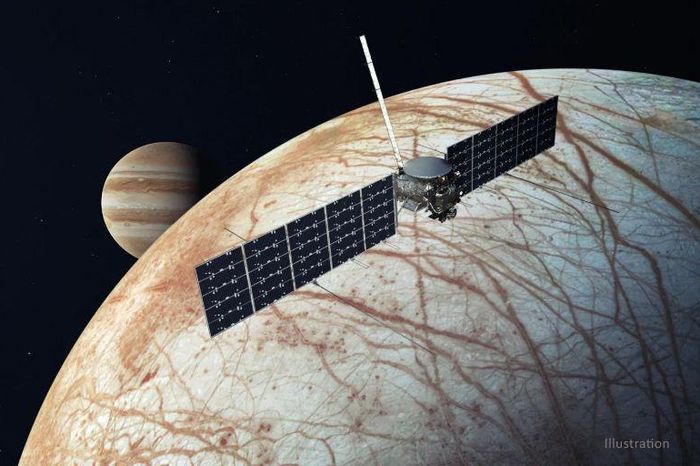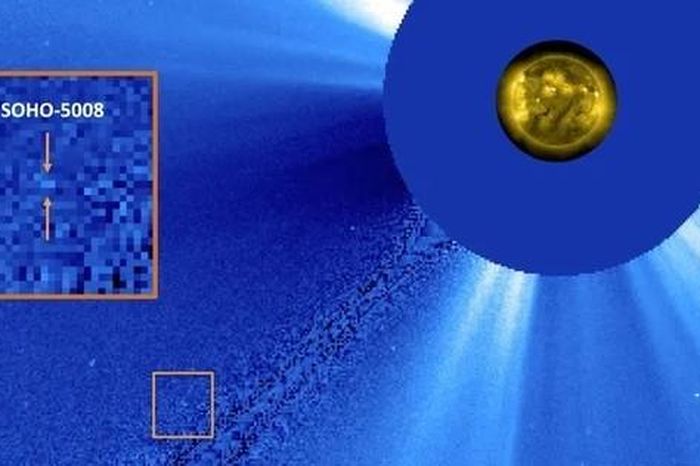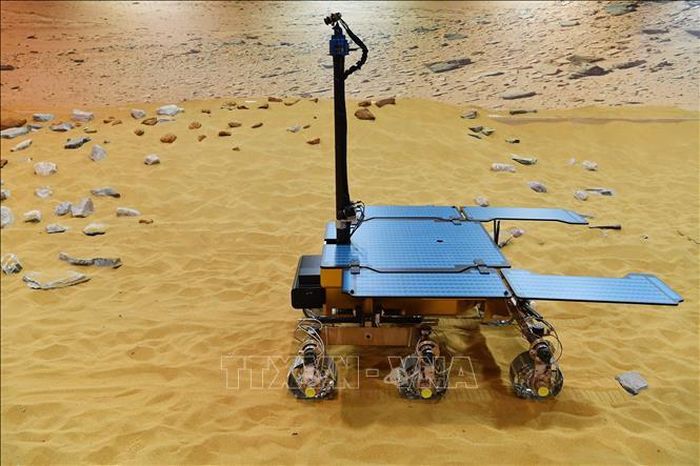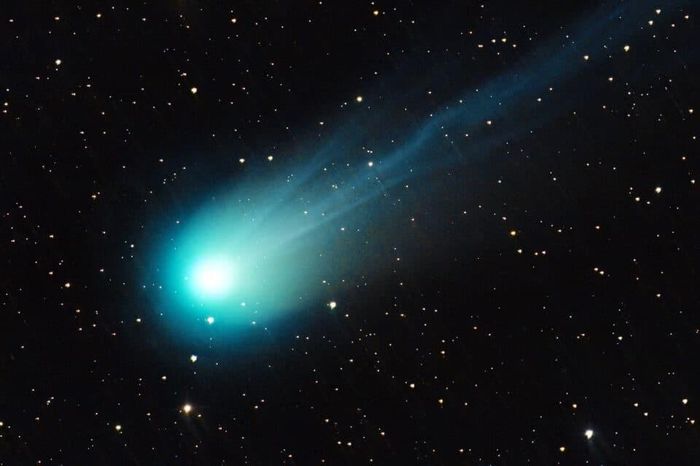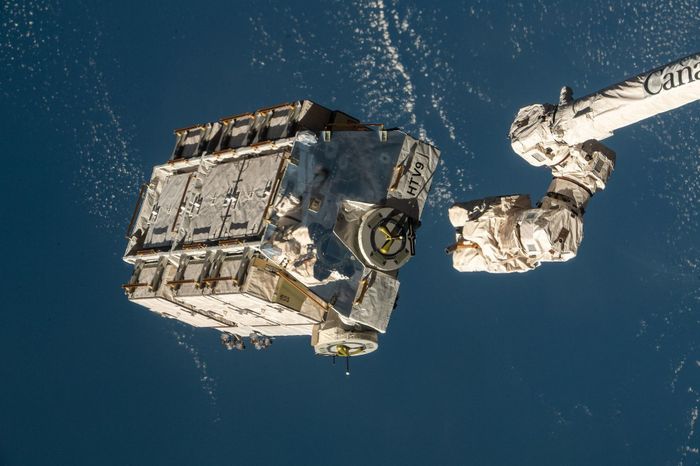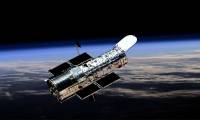
Another impressive photo has just been sent back to Earth by the Hubble Space Telescope, showing a galaxy partially hidden by a giant dust cloud called a dark nebula.

The US Space Agency (NASA) confirmed that the mysterious object that fell into people's homes in Florida last month was a piece of junk from space equipment.
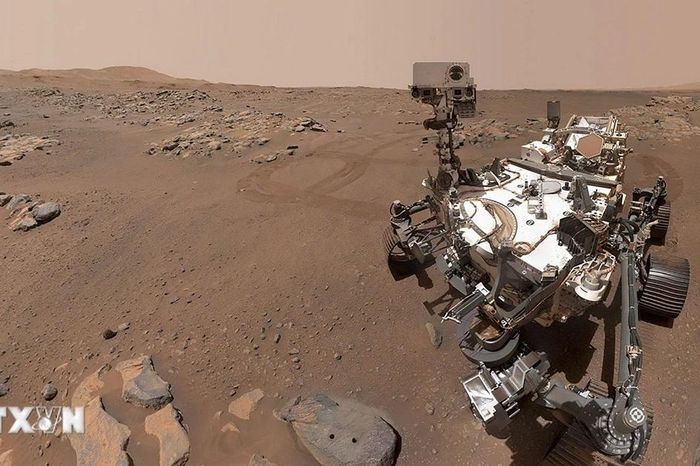
NASA Director Bill Nelson believes that the $11 billion budget is too high and the deadline set to bring rock and soil samples to Earth before 2040 is too long and unacceptable.
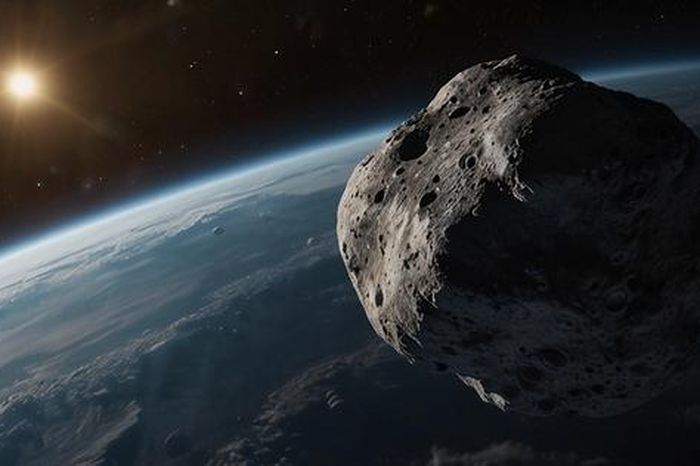
Asteroid 2013 NK4 is classified as 'potentially dangerous' and has just passed close to Earth.

Interesting Engineering page reported that the research team at NASA's Kennedy Space Center (USA) is thinking of many creative methods to apply Electrodynamic Dust Shield (ESD)

At what seemed to be the end of the solar system, NASA New Horizons discovered signs of a 'second Kuiper Belt'.

The suicide dive of the NASA spacecraft named DART caused such a strong impact that our neighboring planet also 'suffered the blow'.

NASA announces plan to search for extraterrestrial life - Phu Yen Newspaper

One of NASA's spacecraft operating outside the heliosphere began sending meaningless messages to Earth late last year, then went silent.

On April 8, just a few hours before the total solar eclipse, an amateur astronomer discovered a small comet 'sungrazer' very close to Earth and took a picture of it before the

Europe once again embarked on an exploration of the planet Mars. The ExoMars mission, which involves sending a mobile robot to the Red Planet, just reached a major milestone.

US President Joe Biden on April 10 once again affirmed his plan to send the first Japanese astronaut to the Moon within the framework of the Artemis lunar exploration program led

On April 8, some places in North America witnessed a total solar eclipse - a scene considered 'once in a lifetime'. This total solar eclipse - nicknamed the Great American Eclipse

The 'Devil Comet' just had an eruption of dust, gas and ice during its first flyby of the earth in 71 years, taking place at the same time as the total solar eclipse on April 8.

A research team in China claims to have discovered a potentially serious vulnerability in hypersonic aerodynamics software from the US Aeronautics and Space Administration (NASA).

A total solar eclipse will take place on April 8 across North America, and it could be the most watched solar eclipse ever.

Russia's Soyuz spacecraft left the International Space Station (ISS), bringing three crew members back to Earth, landing in Kazakhstan on April 6.

At the end of March, JetZero aircraft manufacturer was granted a certificate of airworthiness by the Federal Aviation Administration (FAA) for its aircraft with the Pathfinder

NASA's Curiosity rover will enter an area that has never been explored and may hide alien creatures - ancient or alive.

An unidentified object tore off the roof and both floors of Mr. Alejandro Otero's house in Florida. Currently, NASA is investigating the origin of this incident.
 Another impressive photo has just been sent back to Earth by the Hubble Space Telescope, showing a galaxy partially hidden by a giant dust cloud called a dark nebula.
Another impressive photo has just been sent back to Earth by the Hubble Space Telescope, showing a galaxy partially hidden by a giant dust cloud called a dark nebula. The US Space Agency (NASA) confirmed that the mysterious object that fell into people's homes in Florida last month was a piece of junk from space equipment.
The US Space Agency (NASA) confirmed that the mysterious object that fell into people's homes in Florida last month was a piece of junk from space equipment. NASA Director Bill Nelson believes that the $11 billion budget is too high and the deadline set to bring rock and soil samples to Earth before 2040 is too long and unacceptable.
NASA Director Bill Nelson believes that the $11 billion budget is too high and the deadline set to bring rock and soil samples to Earth before 2040 is too long and unacceptable. Asteroid 2013 NK4 is classified as 'potentially dangerous' and has just passed close to Earth.
Asteroid 2013 NK4 is classified as 'potentially dangerous' and has just passed close to Earth. Interesting Engineering page reported that the research team at NASA's Kennedy Space Center (USA) is thinking of many creative methods to apply Electrodynamic Dust Shield (ESD)
Interesting Engineering page reported that the research team at NASA's Kennedy Space Center (USA) is thinking of many creative methods to apply Electrodynamic Dust Shield (ESD) At what seemed to be the end of the solar system, NASA New Horizons discovered signs of a 'second Kuiper Belt'.
At what seemed to be the end of the solar system, NASA New Horizons discovered signs of a 'second Kuiper Belt'. The suicide dive of the NASA spacecraft named DART caused such a strong impact that our neighboring planet also 'suffered the blow'.
The suicide dive of the NASA spacecraft named DART caused such a strong impact that our neighboring planet also 'suffered the blow'. NASA announces plan to search for extraterrestrial life - Phu Yen Newspaper
NASA announces plan to search for extraterrestrial life - Phu Yen Newspaper One of NASA's spacecraft operating outside the heliosphere began sending meaningless messages to Earth late last year, then went silent.
One of NASA's spacecraft operating outside the heliosphere began sending meaningless messages to Earth late last year, then went silent. On April 8, just a few hours before the total solar eclipse, an amateur astronomer discovered a small comet 'sungrazer' very close to Earth and took a picture of it before the
On April 8, just a few hours before the total solar eclipse, an amateur astronomer discovered a small comet 'sungrazer' very close to Earth and took a picture of it before the Europe once again embarked on an exploration of the planet Mars. The ExoMars mission, which involves sending a mobile robot to the Red Planet, just reached a major milestone.
Europe once again embarked on an exploration of the planet Mars. The ExoMars mission, which involves sending a mobile robot to the Red Planet, just reached a major milestone. US President Joe Biden on April 10 once again affirmed his plan to send the first Japanese astronaut to the Moon within the framework of the Artemis lunar exploration program led
US President Joe Biden on April 10 once again affirmed his plan to send the first Japanese astronaut to the Moon within the framework of the Artemis lunar exploration program led On April 8, some places in North America witnessed a total solar eclipse - a scene considered 'once in a lifetime'. This total solar eclipse - nicknamed the Great American Eclipse
On April 8, some places in North America witnessed a total solar eclipse - a scene considered 'once in a lifetime'. This total solar eclipse - nicknamed the Great American Eclipse The 'Devil Comet' just had an eruption of dust, gas and ice during its first flyby of the earth in 71 years, taking place at the same time as the total solar eclipse on April 8.
The 'Devil Comet' just had an eruption of dust, gas and ice during its first flyby of the earth in 71 years, taking place at the same time as the total solar eclipse on April 8. A research team in China claims to have discovered a potentially serious vulnerability in hypersonic aerodynamics software from the US Aeronautics and Space Administration (NASA).
A research team in China claims to have discovered a potentially serious vulnerability in hypersonic aerodynamics software from the US Aeronautics and Space Administration (NASA). A total solar eclipse will take place on April 8 across North America, and it could be the most watched solar eclipse ever.
A total solar eclipse will take place on April 8 across North America, and it could be the most watched solar eclipse ever. Russia's Soyuz spacecraft left the International Space Station (ISS), bringing three crew members back to Earth, landing in Kazakhstan on April 6.
Russia's Soyuz spacecraft left the International Space Station (ISS), bringing three crew members back to Earth, landing in Kazakhstan on April 6. At the end of March, JetZero aircraft manufacturer was granted a certificate of airworthiness by the Federal Aviation Administration (FAA) for its aircraft with the Pathfinder
At the end of March, JetZero aircraft manufacturer was granted a certificate of airworthiness by the Federal Aviation Administration (FAA) for its aircraft with the Pathfinder NASA's Curiosity rover will enter an area that has never been explored and may hide alien creatures - ancient or alive.
NASA's Curiosity rover will enter an area that has never been explored and may hide alien creatures - ancient or alive. An unidentified object tore off the roof and both floors of Mr. Alejandro Otero's house in Florida. Currently, NASA is investigating the origin of this incident.
An unidentified object tore off the roof and both floors of Mr. Alejandro Otero's house in Florida. Currently, NASA is investigating the origin of this incident.


